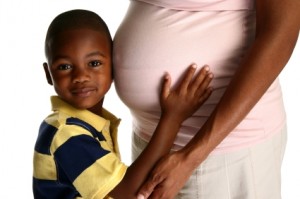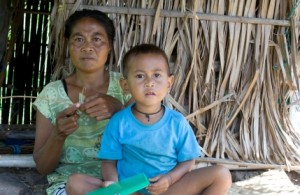In honor of International Women’s Day all of my post in the month of March will be focused on Women Rights and Women Issues. This post is really close to my heart so,I must start off with a confession. I am absolutely totally biased and passionate about the subject of maternal health. I was a certified doula and studied midwifery in a previous life. About 35 percent of pregnant women in developing countries have no access to or contact with health personnel before delivery, and only 57 percent give birth with a skilled attendant present. And it pisses me off….
The right not to suffer from trauma in pregnancy and birth is a basic human right.~ Jan Tritten
The MDGs will not be achieved without investing in women.
Every minute, at least one woman dies from complications related to pregnancy or childbirth. Thats right every. minute. That means 529 000 women a year. In addition, for every woman who dies in childbirth, around 20 more suffer injury, infection or disease – approximately 10 million women each year. Because of this more than 1 million children are left motherless and vulnerable every year. A mother’s death lowers family income and productivity, affecting the entire community. Older girl children are often pulled from school and required to fill their lost mother’s roles. The cost of poor maternal health are just too high.
The MDGs will not be achieved without investing in women.
Five direct complications account for more than 70% of maternal deaths: haemorrhage, infection, unsafe abortion, eclampsia (very high blood pressure leading to seizures), and obstructed labour. While these are the main causes of maternal death, unavailable, inaccessible, unaffordable, or poor quality care is fundamentally responsible.
Women need not die in childbirth. We must give a young woman the information and support she needs to control her reproductive health, help her through a pregnancy, and care for her and her newborn well into childhood. The vast majority of maternal deaths could be prevented if women had access to quality family planning services, skilled care during pregnancy, childbirth and the first month after delivery, or post-abortion care services and where permissible, safe abortion services. 15% of pregnancies and childbirths need emergency obstetric care because of risks that are difficult to predict. A working health system with skilled personnel is key to saving these women’s lives.
How do we make pregnancies safer?
Lets start with some basics:
 Every pregnancy should be wanted.
Every pregnancy should be wanted.- All pregnant women and their infants should be able to access and receive skilled care.
- All women should be able to reach a functioning health facility to obtain appropriate care for themselves or their newborns when complications arise during pregnancy, delivery or the postpartum period.
- Safe pregnancy, childbirth and motherhood are basic human rights
The high incidence of maternal death is one of the signs of major inequity spread throughout the world, reflecting the gap between rich and poor.A total of 99% of all maternal deaths occur in developing countries, where 85% of the population lives.
More than half of these deaths occur in sub-Saharan Africa and one third inSouth Asia. The maternal mortality ratio in developing countries is 450 maternal deaths per 100 000 live births versus 9 in developed countries. Fourteen countries have maternal mortality ratios of at least 1000 per 100 000 live births, of which all but Afghanistan are in sub-Saharan Africa: Afghanistan, Angola, Burundi, Cameroon, Chad, the DemocraticRepublic of the Congo, Guinea-Bissau, Liberia, Malawi, Niger, Nigeria, Rwanda, Sierra Leone and Somalia. That is mind blowing, and if the key to economic progress lies in unleashing the power of women, we are allowing billions of dollars in lost productivity and potential to die as well.
The first step for avoiding maternal deaths is to ensure that women have access to family planning.
Most maternal deaths are avoidable, as the health care solutions to prevent or manage the complications are well known. Since complications are not predictable, all women need care from skilled health professionals, especially at birth, when rapid treatment can make the difference between life and death. For instance, severe bleeding after birth can kill even a healthy woman within two hours if she is unattended. Injecting the drug oxytocin immediately after childbirth reduces the risk of bleeding very effectively In high-income countries, virtually all women have at least four prenatal care visits, are attended by a midwife and/or a doctor for childbirth and receive postnatal care. In low- and middle-income countries, just above two thirds of women get at least one prenatal care visit, but in some countries less than one third have this or, as in Ethiopia, just 12%.
There are many reasons why women do not receive the care they need before, during and after childbirth.Many pregnant women do not get it because there are no services where they live, they cannot afford the services because they are too expensive or reaching them is too costly. Some women do not use services because they do not like how care is provided or because the health services are not delivering high-quality care.
Because of different levels of investment in women’s needs, huge disparities exist in the lifetime risks of maternal death for women in rich and poor countries, and between the rich and poor in all countries.
Fewer than one in 16,400 women will die in pregnancy or childbirth in the ten top-ranked countries; but one in seven will die in Niger, at the bottom of the list. This rich-poor disparity is the largest among all the public health indicators tracked by the World Health Organization.
So the poorer the household, the greater the risk of maternal death and 99% of those deaths occur in developing countries. Not down the street, or across the park and because we do not see it every day it may be hard for us to grasp the scale and the impact. Education is a critical piece to help inform women about their bodies and give them options for life beyond childbearing. Of 137 million illiterate young people in the world, 63 percent are female. It is more difficult to educate a young woman on her reproductive rights if she is illiterate. It is more difficult, not impossible.
But lets get down to the brass tacks. women die in childbirth because women do not have a strong political voice in many countries and in some countries they do not matter. Childbirth is not an untreatable disease. The powers that be know exactly what needs to happen to save women lives. Nearly all maternal deaths are preventable –with increased political will and adequate financial investment they can be prevented.We invest resources in those things we care about and that are important to us, as individuals as well as a society. Poor women matter. Rural women matter. Urban women matter. African and Afghan women matter. Mothers MATTER.

